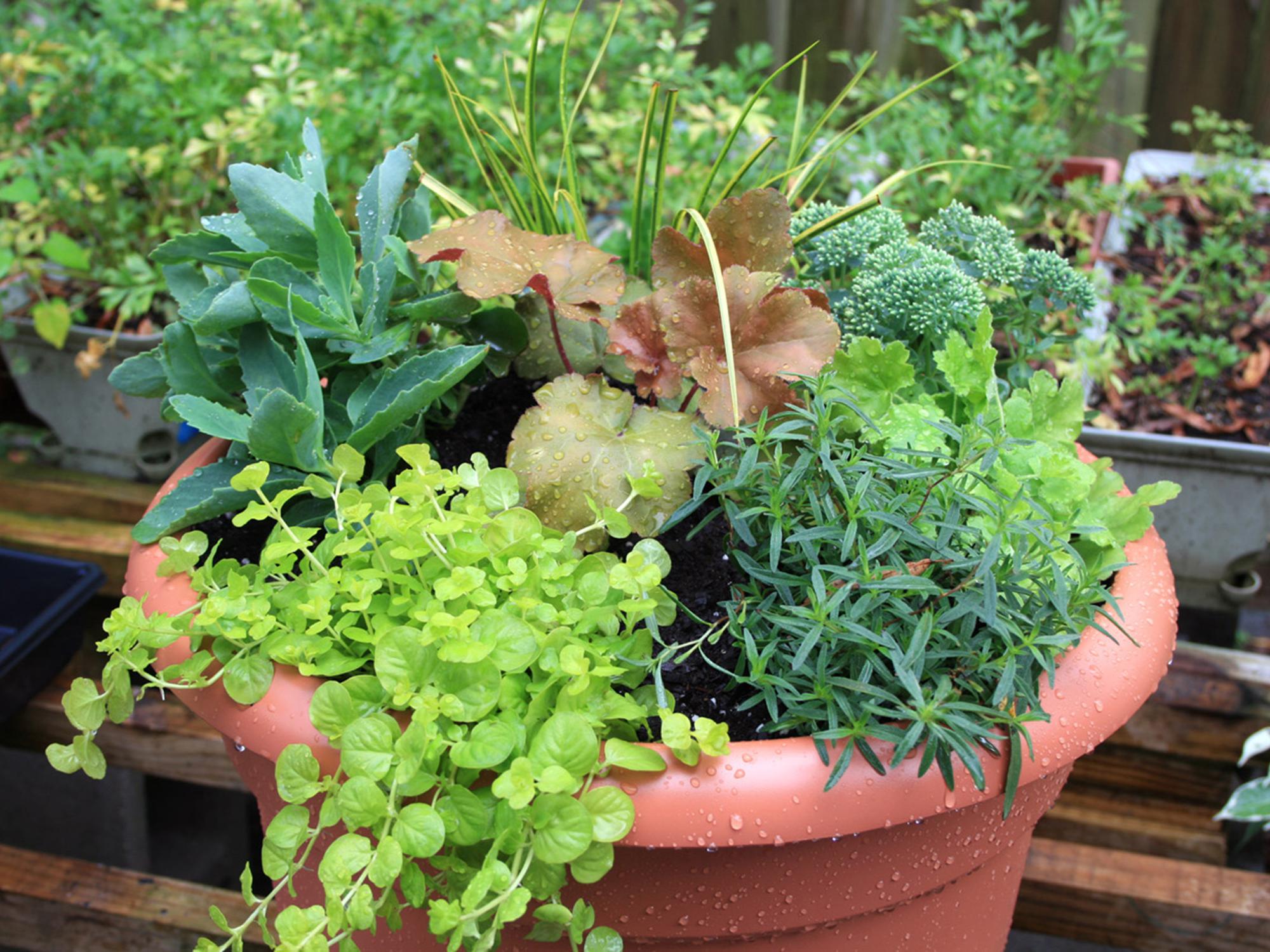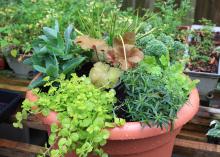Information Possibly Outdated
The information presented on this page was originally released on September 17, 2018. It may not be outdated, but please search our site for more current information. If you plan to quote or reference this information in a publication, please check with the Extension specialist or author before proceeding.
Use select perennials to expand container options
When summer starts to roll around to autumn, some gardens and landscapes nearly start all over, as worn-out summer annuals are composted and new seasonal selections take their place.
Containers often take on whole new looks, as annuals such as petunias or million bells are removed to make room for mums and other fall staples. But have you ever tried mixing things up and including perennials in container gardens?
I think this important group of plants should be an ingredient in every container recipe.
The problem is that many gardeners have a strict rule about mixing annuals and perennials in containers: Never the twain shall meet. But if you base all your buying decisions on whether a plant will come back the next year, you miss out on some beautiful options.
Perennials can add a whole new dimension to your container gardens if you follow the thriller, filler and spiller formula. For filler plants, choose colorful leaves and strong forms. Consider plants that look good without any flowers, such as coral bells and corkscrew rushes. Their possible blooms are an added bonus.
For your thriller plants, try adding height or color with flowers. Most perennials do not bloom as long as annuals do, so it is important to swap out plants as they fade.
Here’s a trade secret that many landscape professionals use to keep high visibility areas looking good: Plant the entire pot of your chosen flowering perennial into your combination planter. When the perennial begins to fade, remove it from the buried pot and replace it with a new plant.
Grasses make good thriller plants because their vertical lines add interest. Tricolor Pennisetum, with its green, pink and white variegations, makes a great container choice. Or choose the Mississippi Medallion winner Gulf Coast muhly grass for its blue-green leaves and soft-pink blooms above the foliage.
A good spiller perennial is Ajuga or Lysimachia. Uncontained, these two will run all over your garden, but in a container, they spill beautifully over the edges.
So far, I’ve given examples using only perennials in containers, but you can also combine perennials and annuals in the same container for the best of both worlds.
The strong form of perennials combined with the colorful flowering of annuals is striking. Perennials grow more slowly than annuals, so be sure to start with larger sizes of perennials to keep the annuals from smothering them.
Fall is a good time to make a perennial combination container. Soon, temperatures will drop and plants that went into survival mode during the hot months will start to grow again. Additionally, many garden centers have fall sales to inspire you to get creative.
If planting several perennials seems too complicated, then simply plant a single perennial in a container.
A challenge when using perennials is what to do at the end of the season when the plant does not look good, but you know it will come back next year. You can treat perennials as annuals and put them in a compost pile, or you can plant them in an open spot in the garden to overwinter. Be sure to transplant them several weeks before the first frost to let the plants acclimate to their new home.
Perhaps the simplest route is to leave the container as is and see what happens the following spring. If you choose this option and are using a ceramic or terracotta container outdoors, be sure to lay the container on its side. This allows any water that freezes to expand without breaking the container.
There are many possibilities when growing perennials in containers, so get creative and try some different combinations this fall.



